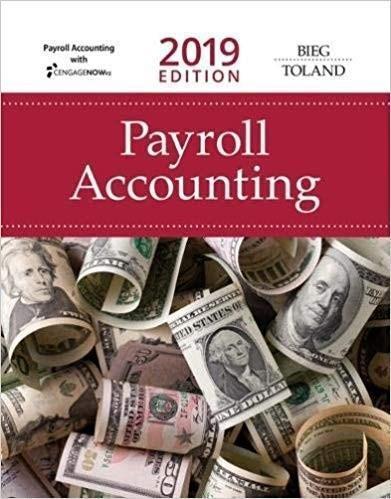Mr. Browns employer provides him with an automobile for his personal use, and pays all operating costs for that vehicle. The vehicle, used by Mr. Brown throughout 20XX, cost his employer $31,500, including GST of $1,500 (no provincial sales tax was charged on the vehicle purchase). Mr. Brown drove the vehicle 45,000 km during the year, of which 9,000 km were for personal purposes. His employer paid $7,750 in operating costs for the year. Mr. Brown paid nothing to his employer for the use of the vehicle.
Which one of the following amounts represents theminimumtaxable benefit that Mr. Brown must include in his employment income for the use of this vehicle in 20XX?
(Round the end result to the nearest dollar)
Question 2 options:
Omar is employed by Sansauto Corp. and uses his own car for employment activities. Which of the following mayNOTbe claimed as an employment expense deduction?
Question 3 options:
| 1) | Gas (employment related portion) |
|
| 2) | Auto insurance (employment related portion) |
|
| 3) | Standby charge (employment related portion) |
|
| 4) | Oil change (employment related portion) |
|
Sam borrowed $50,000 from her employer at an annual rate of 1% interest last year to cover her gambling debts. Assume that at the time the loan was made, the prescribed rate of interest was 3% and this rate has not changed. Sam is subject to a combined tax rate of 30 percent. What is the after tax cost of the loan to Sam for the current year?
Question 4 options:
An employee of a public Canadian corporation receives an option to purchase 1,000 of her employers common shares at $20 per share in July, 2014. At this time, the fair market value of the stock is $19 per share. In March, 2015, when the fair market value is $26 per share, she exercises the option and immediately sells the shares. By what amount do these transactions increase her Taxable Income?
Question 6 options:
With respect to employment related automobile costs and benefits, which of the following statements is correct?
Question 7 options:
| A) | When an employee is provided with an automobile that is purchased by the employer for $50,000, the taxable benefit to the employee will be based on the prescribed limit of $30,000. |
|
| B) | An employee who uses his own vehicle for employment related activities cannot deduct any financing costs related to the acquisition of the car. |
|
| C) | An employee who is provided with a vehicle owned by his employer can deduct capital cost allowance to the extent that the vehicle is used for employment related activities. |
|
| D) | If an employee drives an employer provided vehicle for more than 20,004 kilometers of personal use during a year, there will be no reduction of the basic standby charge. |
|
Which of the following statements about expense deductions for employees isNOTcorrect?
Question 8 options:
| A) | In order for an employee to deduct work space in the home costs it must be the place where that individual principally carries on his employment duties. |
|
| B) | If an employee uses his own automobile to carry out his employment duties, he can deduct a pro rata share of the interest that he pays on a loan to finance the automobile. |
|
| C) | In order to deduct travel costs, an employee must ordinarily be required to carry on his duties away from the employers place of business. |
|
| D) | If an employed salesperson who earns commission income acquires a cell phone, he cannot deduct CCA on this asset. |
|






